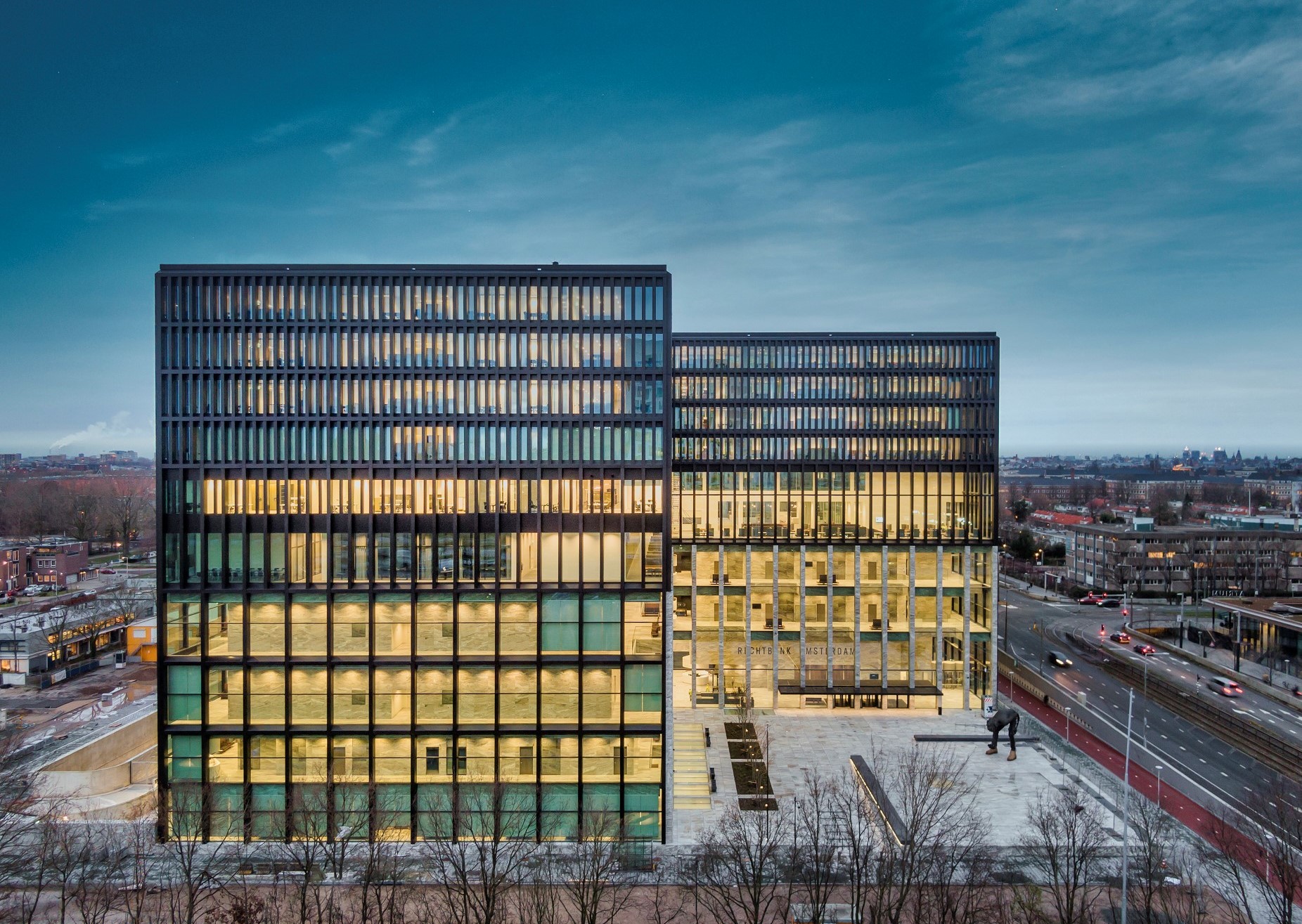COURTHOUSE AMSTERDAM PROVES THAT SECURITY CAN FEEL FREE
06 September 2022

Anyone taking in the open character of the already iconic Amsterdam District Court upon entering can hardly imagine standing in a heavily secured building. Something that almost surprises even Micha Meelis, even though he knows exactly why security can feel so free. “It was part of the design from the very beginning,” he says.
The director of Meelis & Partners does not have to think long about what he finds most successful. "The building is authoritative and exudes simplicity and tranquillity. Moreover, it is easy to find your way around." It is the result of a unique process in an equally special collaboration, in which integral safety was a true design discipline.
It was ABT that hooked Meelis & Partners as a specialist in the special consortium New Amsterdam Courthouse (NACH), responsible for the design, construction, financing, maintenance and operation of the courthouse NACH is a collaboration between Macquarie Capital, Oosterhoff (ABT, bbn adviseurs, Huygen and Meelis & Partners), DVP, Kaan Architects, Heijmans and Facilicom. Construction began in 2017 and from May 2021 the Amsterdam District Court will be operational.
Safety as design
Micha: "Never before have we been at the table so early in this position". It turned out to be the opportunity to show that designing safety, instead of fighting insecurity, benefits both the building and the user. That was also explicitly one of the wishes of the Rijksvastgoedbedrijf as client. And, as far as Micha is concerned, also the success of this property.
"The aim was to optimally facilitate all court processes by design," he explains. "In this case, extra important because a court in operation has different flows. You have defendants, injured parties, the judiciary and the public. The task of security is to ensure that conflicting activities meet or are controlled as little as possible."
In every detail
Together with the architect, the process flows were mapped, taking fire safety, physical security and social safety into account in the design. "For example, by creating natural sightlines and thus social surveillance. By optimal transparency, from inside to outside and vice versa, without blocking elements."
But things like walking distances, or the number of times employees have to offer their pass before they reach their workplace, were also taken into account. "Every detail incorporates safety. In the end, it's all about feeling safe, being safe and freedom of movement for all users."
And according to Micha, you only really achieve that when you approach security integrally and don't let it be the closing item. "Adding measures afterwards contributes to a safe situation, but is neither the most efficient nor does it make people feel safer. After all, the latter has nothing to do with cameras, access control or fire safety."
A working method with a future
The Amsterdam court sees Micha as both a learning school and a working method with a future. Not only because of the way security is woven into the design, but also because of the cooperation within the consortium. "This project therefore also fits Oosterhoff very well. You don't do it alone, but together. And of course there were discussions, that's part of it. But if in the end everyone is satisfied and impressed with the result, then you have done well."
The Amsterdam District Court was named BNA Best Building of the Year in the 'Identity and Iconic Value' category. This is the annual architecture award focusing on not only the building itself, but also its impact on society.
Photography: Fernando Guerra